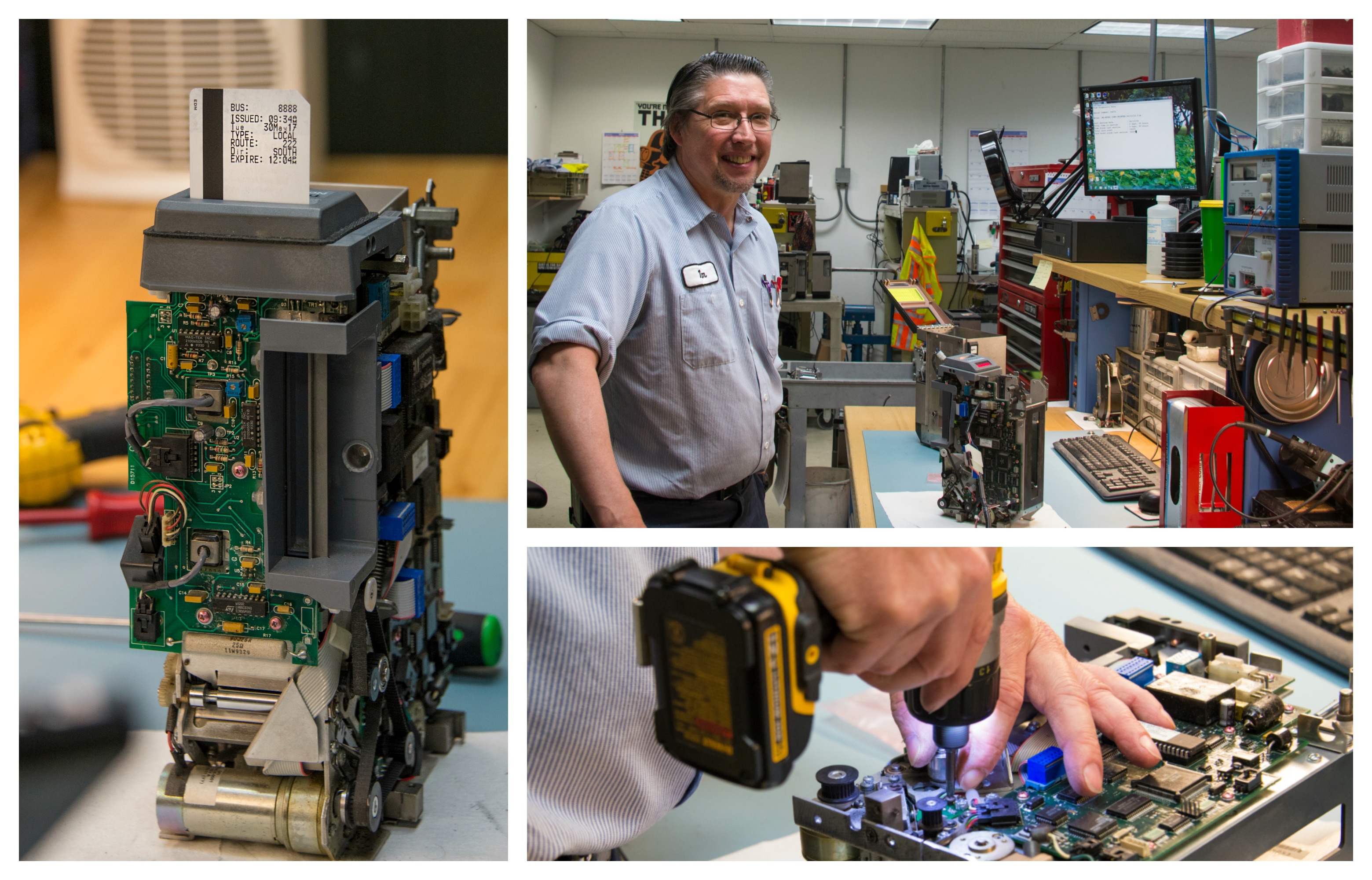
Metro Transit has been using the same fareboxes for nearly a quarter-century.
But even after more than 20 years of keeping them in shape, Lead Revenue Mechanic Technician Tim Maloy says his job is as interesting as ever.
“It’s a little strange to be working with the same piece of equipment after all this time, but there are still days they beat you up,” he said from the Instruction Center, where he and several other farebox technicians work. “There’s never boredom.”
The intrigue comes in part from the fact that the fareboxes are largely mechanical pieces of equipment – carefully-calibrated sets of plastic gears, belts, sensors and circuit boards that pull in cash and coins deposited by cash-paying customers.
With so many moving parts, the margin for error is small. Lint, sunflower seeds and other small debris that comes from a customer’s pocket can easily jam the machines.
The puzzles technicians face aren’t easily solved by reading a manual or running a quick diagnostic test, either.
“There are things you can look at, but you don’t really have a troubleshooting process,” said Trevor Scholtz, one of two-dozen farebox technicians. “All you can do is take it apart and eventually find out what’s wrong with it. And the only way to test is to put it all back together again.”
More recently, Maloy has been on a campaign to steadily replace the metal pieces that hold stacks of transfer cards in what’s known as a trim unit, which attaches to the coin and bill collecting machine. A slight offset in the old design would cause more than one ticket to get fed into the machine, frequently causing jams that required repair.
“That’s been my main goal, because that was what was contributing to the bulk of our road calls,” said Maloy, whose 37-year career also includes stints as a vault puller and in Central Counting.
The majority of the cassettes have now been replaced, and farebox-related road calls have been cut in half.
Just like any other mechanical failure on a bus, fareboxes that break down while in service can cause a bus to be replaced. Farebox technicians may also be called out to replace parts or make quick repairs during a layover. To prevent those kind of situations, each service garage has at least one farebox technician who spends their mornings repairing fareboxes before pull-out each morning.
Maloy and several other Farebox Technicians at the Instruction Center also focus heavily on preventative maintenance, disassembling, cleaning and rebuilding each machine every six months. Each rebuild takes up to four hours.
“It’s the only thing that keeps these things going this length of time,” Maloy said.
Technicians at the Instruction Center also maintain ticket vending machines that customers use to purchase fares at stations and vault equipment used to securely collect farebox collections when a bus pulls in.
Technicians do not maintain the fare care readers, but they did take the lead on a recent fleetwide replacement and will continue to outfit new buses with the latest technology.
Like Maloy, several technicians have spent long careers working with fare collection technology, and are still excited about what they do.
Technician Lisle “Butch” Vickerman helped install the existing fareboxes 24 years ago, crawling under buses to detach older machines that accepted only coins and tokens, and weren’t able to count the change. These days, he spends his time repairing circuit boards.
“It’s still fun after all these years,” Vickerman said.
> Balancing the books between the farebox and the bank